In a field in rural Texas, Thomas Hinterdorfer stood under a green-tinged sky with the wind screaming past him at 265km/h.
For Hinterdorfer, this is as good as it gets.

For ten months of the year, the Toowoomba local is a professional meteorologist in Australia.
From mid-April to late June, he’s a “storm chaser”, racing up and down America’s Tornado Alley in search of the tornadoes, twisters and the biggest hailstones he can find.
“Finding storms in the USA is a piece of cake,” he explained to 9news.com.au.
Picking the storms to chase is where the skill comes in, he said.
Hinterdorfer and his partner Katey use sophisticated computer models and satellite imagery to figure out where the most spectacular tornadoes are likely to form.
What comes next is a white-knuckled drive across state lines, as they get as close to the tornadoes as they can safely tolerate.
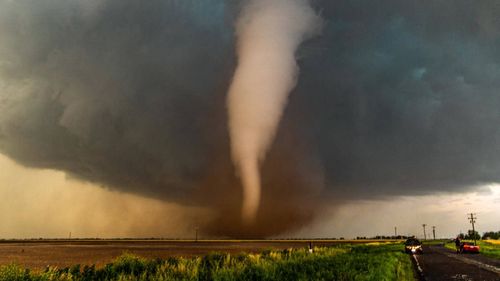
Tragically, several people have already been killed by tornadoes in the US this year.
Buildings have been blown to shreds and towns torn apart.
Despite the risks, Hinterdorfer maintains that storm chasing in the US is no more dangerous than driving to the shops in Australia.
“There are more injuries from car crashes in Sydney every morning than there are from storm chasing in an entire year,” he said.
“We are very respectful that this is a very dangerous ‘sport’, passion or profession.”
Because storm-chasers are often among the first on the scene after a tornado rips through an inhabited area, he’s seen the heartbreaking aftermath of the tornadoes all too many times.

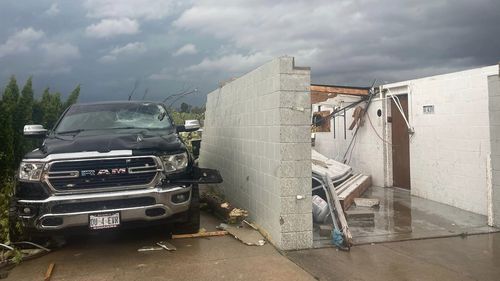
“It’s devastating every time,” he said.
On April 27, a catastrophic tornado tore through the Nebraska town of Elkhorn.
Hinterdorfer and Katey were on the ground in the storm’s aftermath, assisting local authorities with search and rescue operations.

Exceptional tornado streak weaves path of destruction
As they stepped in to help the victims of the tornado, the scenes were confronting.
“People think we love chasing the drama and everything,” he wrote on Facebook that evening.
“I haven’t stopped crying for 30 minutes.
“This was a violent, destructive, catastrophic tornado that has changed multiple communities forever.”
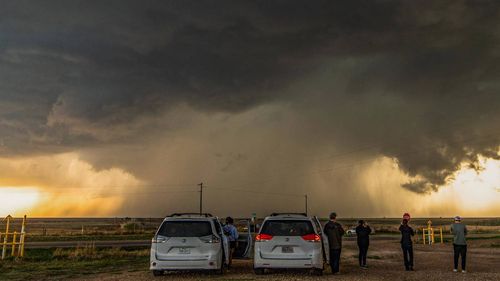
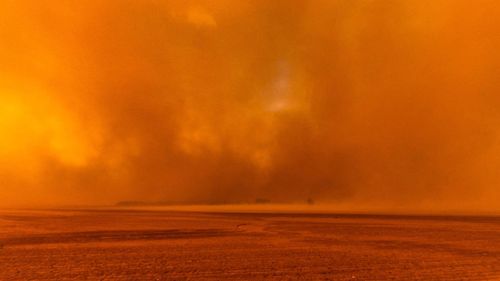
Hinterdorfer became “absolutely fascinated” by the weather from an early age.
Now on his seventh trip for the “season” (from April to July in the US), he said the chasing has become an invaluable part of his knowledge and training as a meteorologist.
“You learn so much in the field and seeing things for yourself, and that experience becomes invaluable for future forecasting and future chasing,” he said.
“The more I chase, the more I learn”.
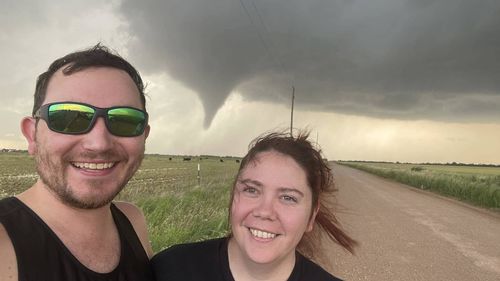
Not every day on the chase is successful.
One day last week, the pair drove nearly 1200km across six US states, with only a 30-second glimpse of a tornado to show for it.
Day-to-day, their fortunes can change by the minute.
Hinterdorfer said the more experienced storm chasers become, the more they can manage the ebb and flow of emotions throughout the day.
“Less experienced chasers can often be overly excited, or overly down, depending on how the chase goes,” he said.
“More experienced chasers know how to use the frustrating or quieter moments in a positive manner and to ride the highs for much longer.”
Hinterdorfer and his partner will continue their chase until the end of the season in early July.
“We are also hoping to continue seeing ridiculous storms that leave you speechless, and using those storms to meet up with as many friends as possible.”







